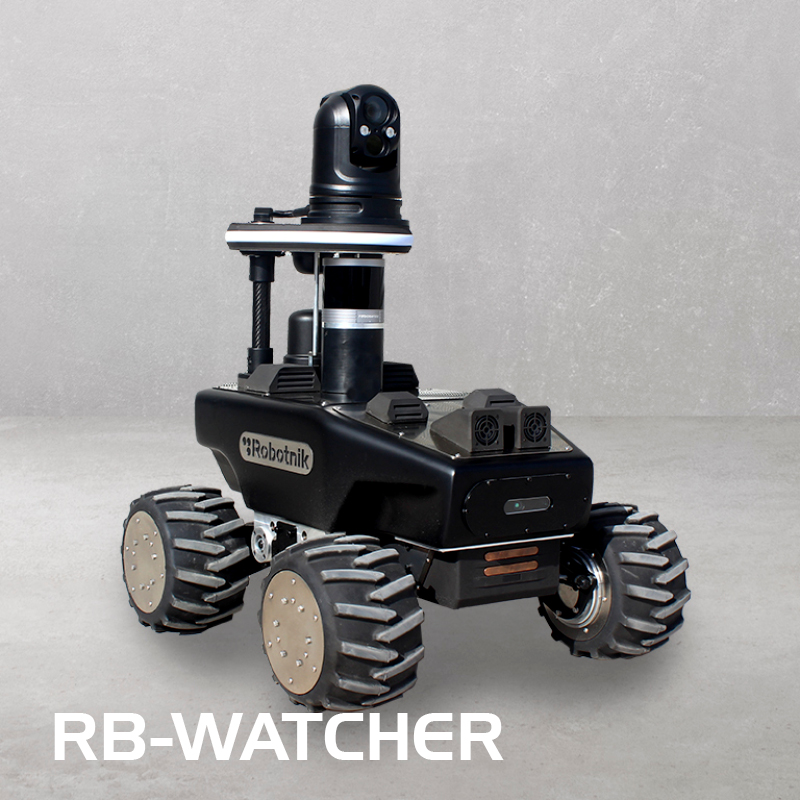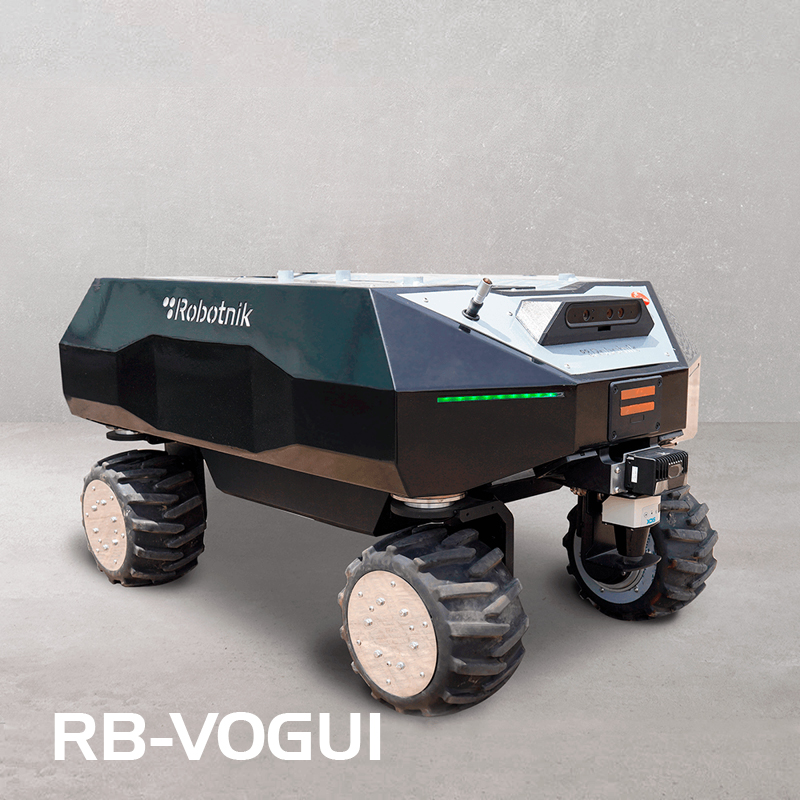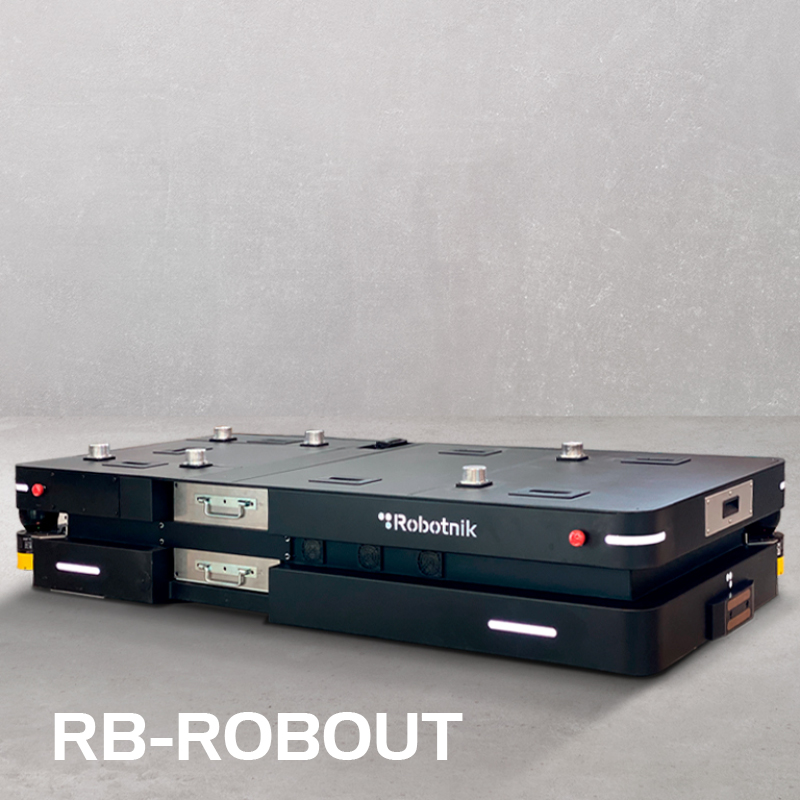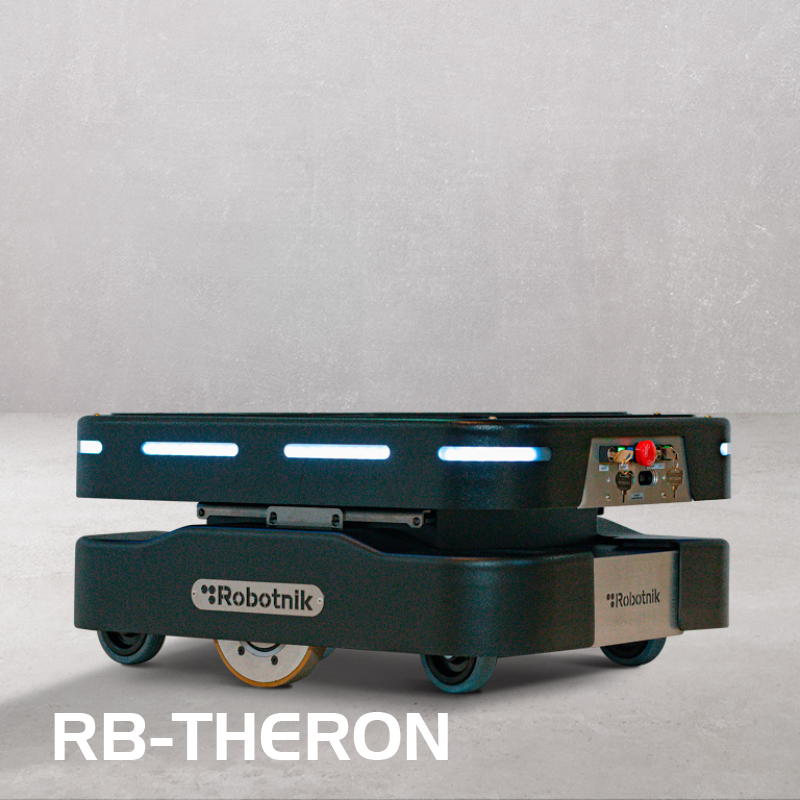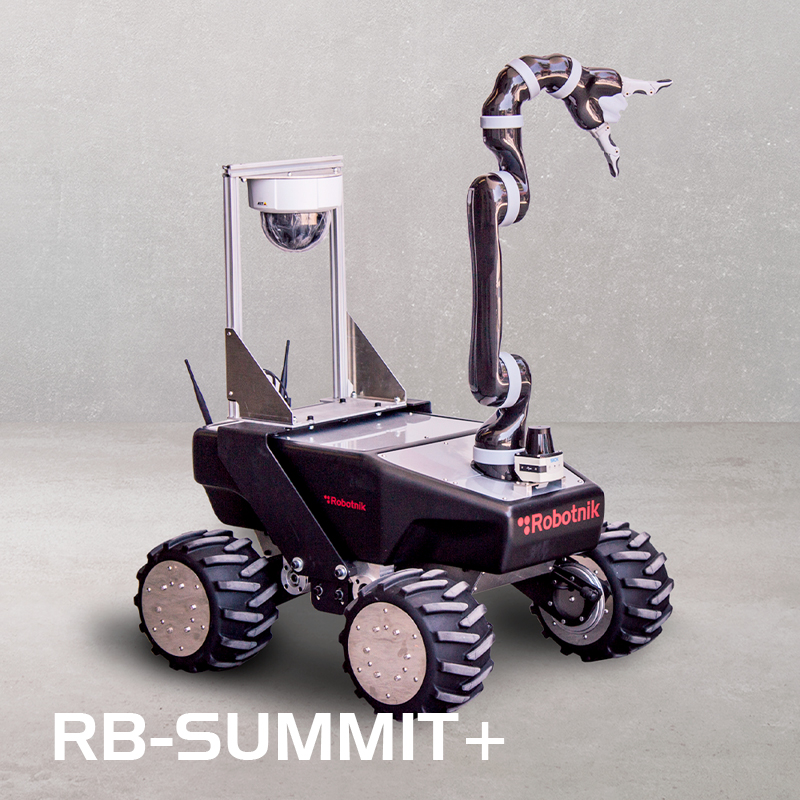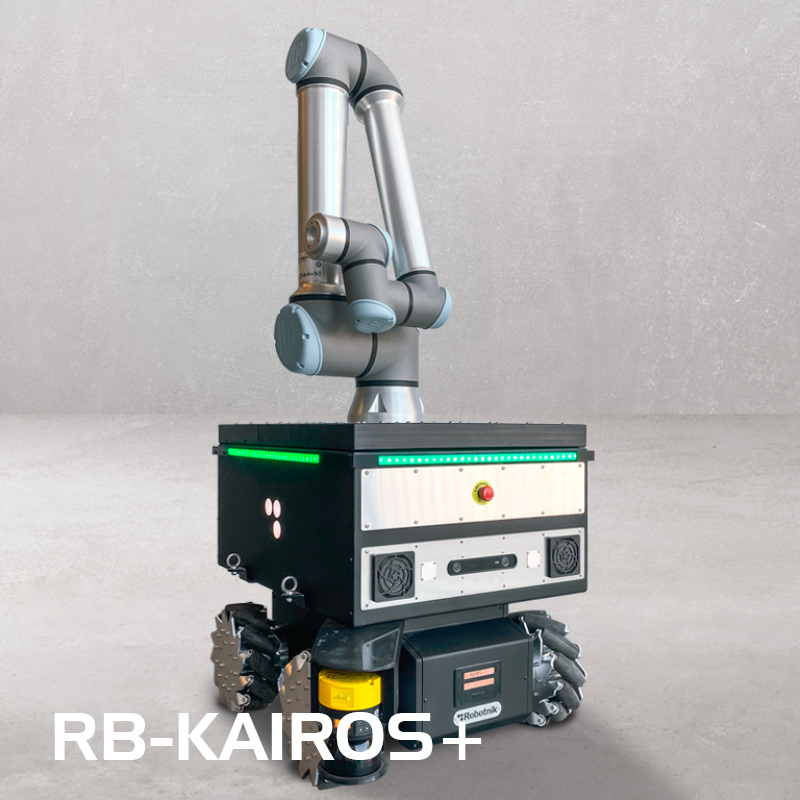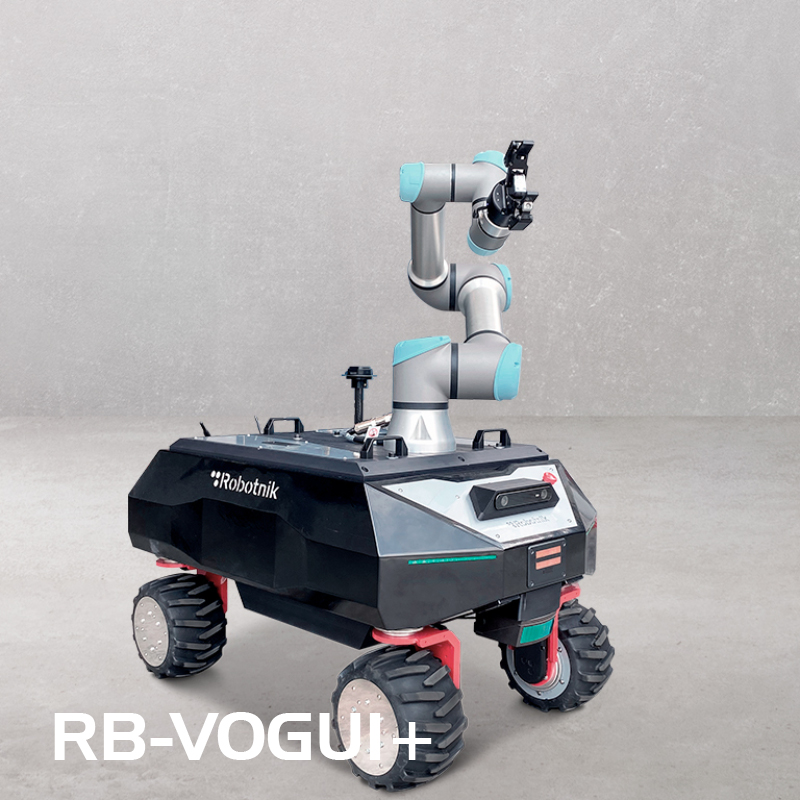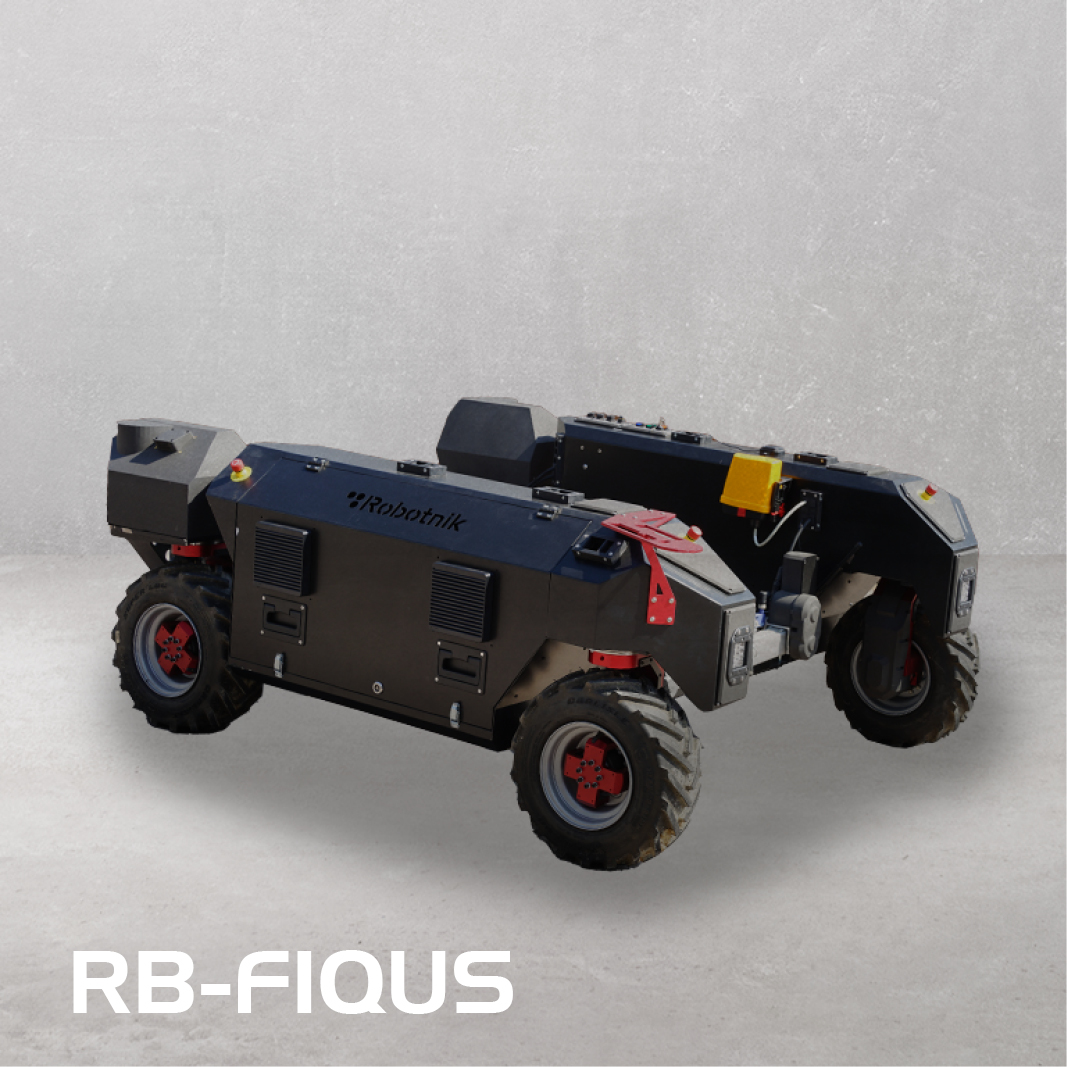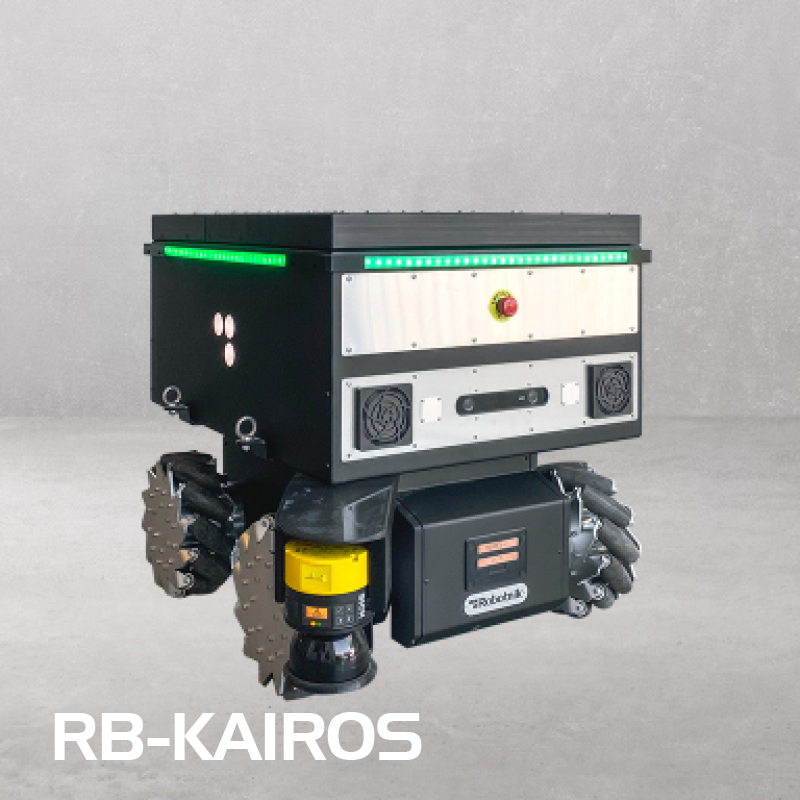Which robot is suitable for each industry?
Robotnik’s collaborative mobile robots are developed to automate tasks intelligently in different areas. Find out here which robot is the most efficient for your job or process.
None of these categories fits yours? Contact us and we will find the robotic solution for your project.
Inspection & surveillance
AUTONOMOUS PATROLLING | REAL-TIME MONITORING OF CAMERAS AND SENSORS | REAL-TIME ALARM TRANSMISSION | PEOPLE DETECTION | OBJECT DETECTION | FIRE DETECTION | DATA COLLECTION | REMOTE CONTROL
More accurate, efficient and reliable surveillance protocols to ensure safety, inspection and maintenance in a wide range of environments. Mobile robots perform constant patrol and monitoring tasks reducing cost and errors.
R&D
MACHINE VISION AND IMAGE PROCESSING | ARTIFICIAL INTELLIGENCE AND MACHINE LEARNING | HUMAN-ROBOT INTERACTION (HRI) | SWARM ROBOTICS | ROBOTICS CONTROL SYSTEMS AND MULTIBODY MECHANICS | AUTONOMOUS SYSTEMS | SOFT ROBOTICS | COGNITIVE ROBOTICS | SENSOR FUSION AND INTEGRATION
Modularity, integration and adaptability for robotics R&D projects of private or public research centers, universities or innovation departments of private companies. Get the robot that allows you to develop the R&D required for your final application.
Agriculture
HARVESTING AND SORTING PROCESSES | CROP CONDITION IDENTIFICATION | APPLICATION OF CHEMICALS AND PESTICIDES | SPRAYING | INFORMATION GATHERING
Mobile robotics transforms agriculture by intelligently automating processes that improve competitiveness and resource efficiency, while avoiding farmers from the heaviest labor.
Healthcare
HANDLING OF CHEMICAL OR TOXIC MATERIALS | INVENTORY MANAGEMENT | TRANSPORT OF MATERIALS | TELE-ASSISTANCE | DATA COLLECTION
Healthcare workers spend a great deal of time managing medical inventory or transporting medicines and equipment. Mobile robots perform these tasks autonomously and constantly, allowing healthcare professionals to focus on higher-value tasks.
Logistics & transport
QUALITY CONTROL | PICK & PLACE | INDOOR TRANSPORTATION | TOOLING OPERATIONS ON LARGE PARTS | HANDLING OF CHEMICAL OR TOXIC MATERIALS | SUPPLYING PRODUCTION LINES | SCREWING
In increasingly competitive logistics and production environments, mobile robots help to optimize times, avoid errors, make costs profitable and improve the productivity of warehouse operations.


